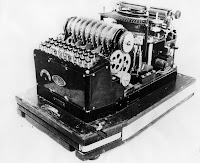 So you'd like to do more volunteering but can't find the time? Here's an easy way to do it: Donate the spare processing power on your computer via one of the dozens of ongoing volunteer computing projects, many based on open source software called BOINC. You know, like SETI@home, the well-documented project that uses otherwise idle computing cycles to help "search for extraterrestrial intelligence."
So you'd like to do more volunteering but can't find the time? Here's an easy way to do it: Donate the spare processing power on your computer via one of the dozens of ongoing volunteer computing projects, many based on open source software called BOINC. You know, like SETI@home, the well-documented project that uses otherwise idle computing cycles to help "search for extraterrestrial intelligence." Here's a look at 12 cool projects, with thanks to volunteer computing enthusiast Jonathan Brier and UC Berkeley's David Anderson for their insights. The Web sites for the various projects typically include stats on how much processing power they're using, who is volunteering their processors, and so on.
1. Climateprediction.net
What it's all about: Climateprediction.net, based at Oxford University and the Open University in the U.K., describes itself as "the world's largest climate forecasting experiment for the 21st century." This distributed computing project is designed to produce predictions of the Earth's climate up to 2080 and to test the accuracy of climate models. Experiments include estimating the possible effects of climate change mitigation strategies and an investigation of the possible impact of human activity on extreme weather risk.
2. IBM World Community Grid
What it's all about: The World Community Grid's mission is "to create the world's largest public computing grid to tackle projects that benefit humanity." The grid supports research into cures for muscular dystrophy, influenza, AIDS and childhood cancer, among other things. The grid, which was headed for half a million members as of August 2009, runs on BOINC software and is funded by the NSF.A number of other volunteer computing projects also target disease cures, largely via protein research. For example, Rosetta@home's pitch is that it "needs your help to determine the 3-dimensional shapes of proteins in research that may ultimately lead to finding cures for some major human diseases," including Malaria and Alzheimer's. The project, started in 2005, is run by the Baker Laboratory at the University of Washington. Docking@home and Folding@home are among other worthy volunteer computing projects that tackle protein research to help fight diseases.
3. MilkyWay@home
What it's all about: The goal of MilkyWay@home is "creating a highly accurate three dimensional model of the Milky Way galaxy using data gathered by the Sloan Digital Sky Survey. This project enables research in both astroinformatics and computer science." Among other things, the project is designed to help figure out how galaxies are formed. MilkyWay@Home is a joint effort between Rensselaer Polytechnic Institute's departments of Computer Science and Physics, Applied Physics and Astronomy.4. LHC@home
What it's all about: LHC@home "enables you to contribute idle time on your computer to help physicists develop and exploit particle accelerators, such as CERN's Large Hadron Collider." One application, SixTrack, generates results that are "essential for verifying the long term stability of the high energy particles in the LHC." For CERN, volunteer computing resources are seen as useful for tasks6. Quake-Catcher Network
What it's all about: This one is different from the other projects in that it's not really exploiting processing power, but rather, built-in accelerometers in laptops as a distributed seismograph. The idea is to provide a better understanding of earthquakes, give early warning to schools, emergency response systems and others (a big emphasis of the project is getting K-12 science teachers involved). While desktop systems don't have accelerometers, they can be outfitted with USB-based sensors to partake in the network. The smallest earthquake detected by the network so far measured 3.1 in southern California and the largest has been a 6.4 in Japan. The project, which has about 1,000 sensors in action (though the number varies week to week), is the brainchild of researchers from the University of California, Riverside and Stanford University.7. Enigma @home

What it's all about: Enigma@home is a distributed computing network based on the M4 Project designed to break three
original Enigma messages intercepted in the North Atlantic in 1942. (The project gets its name from the four rotor Enigma M4 machine presumed to be used by the Germans for enciphering the signals during wartime.) The project, which started in January of 2006, succeeded in breaking t
he first two messages (the first one read in part "Forced to submerge during attack") within a
couple of months, but is still working on No. 3. For more on this project, go here.
8. NQueens@home
What it's all about: Expands on the original eight queens problem in which you try to figure out how to put eight queens on a chess board in such a way that none of them can attack any of the others. NQueens@home attempts to find solutions if you increased the number of boards and queens to the value N, which most recently is 26. Really, you wouldn't want to try to figure that out without the help of a distributed computing network.This isn't the only project devoted to figuring out chess problems. Chess960@home focuses on Fischer Random Chess, a twist on classical chess in which pieces start in different positions.


What about the biggest... Folding@Home?
ReplyDelete